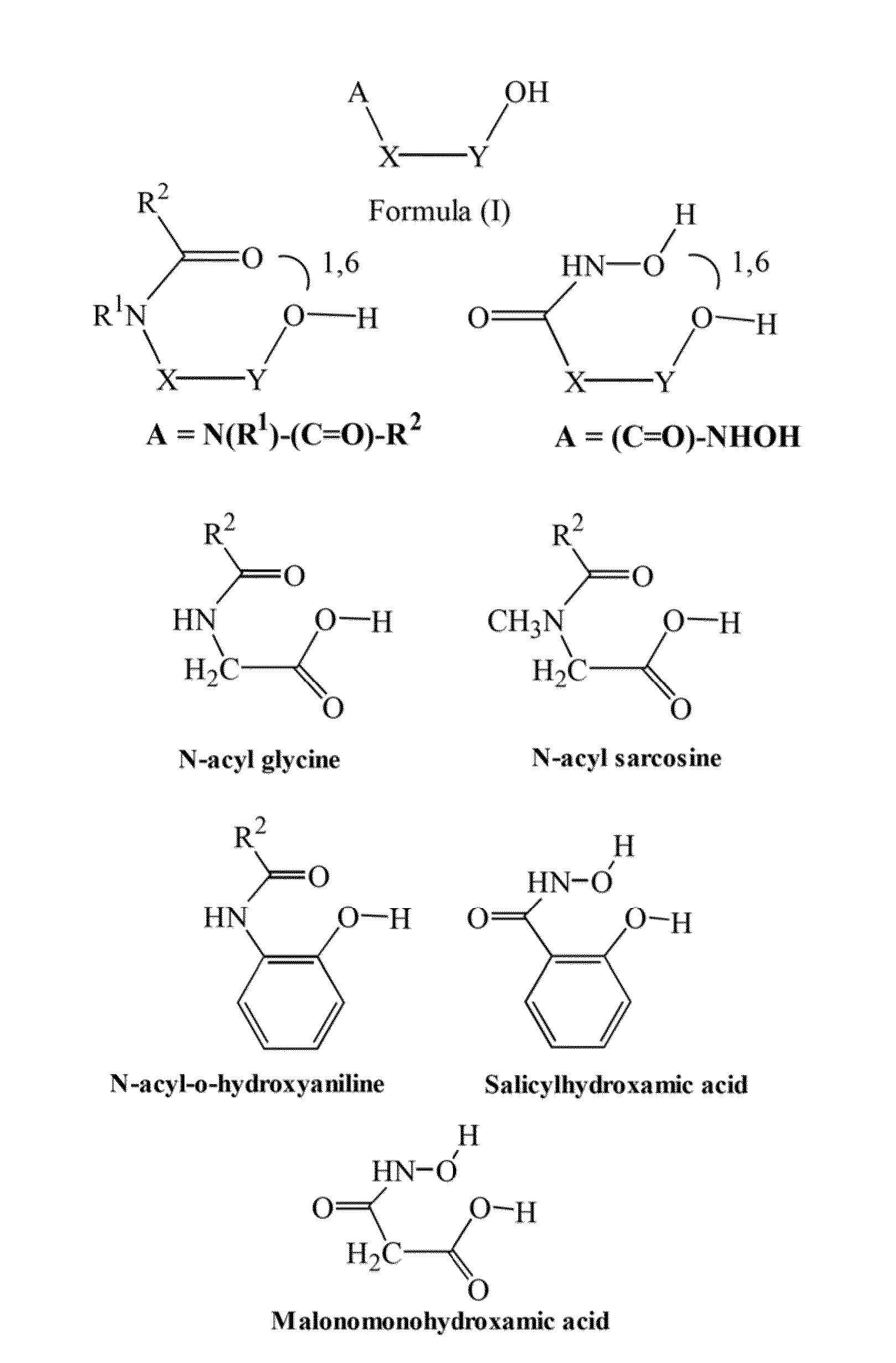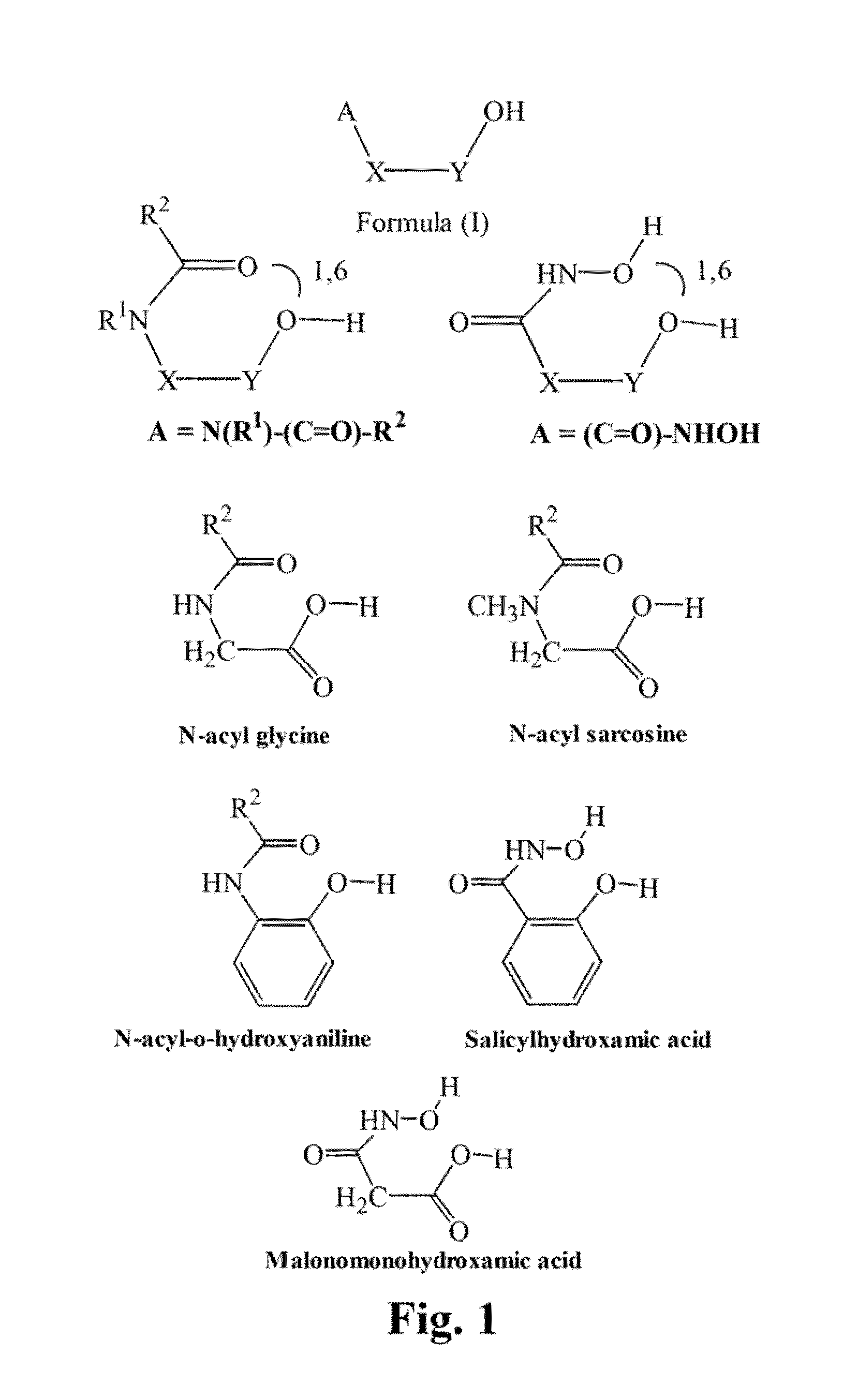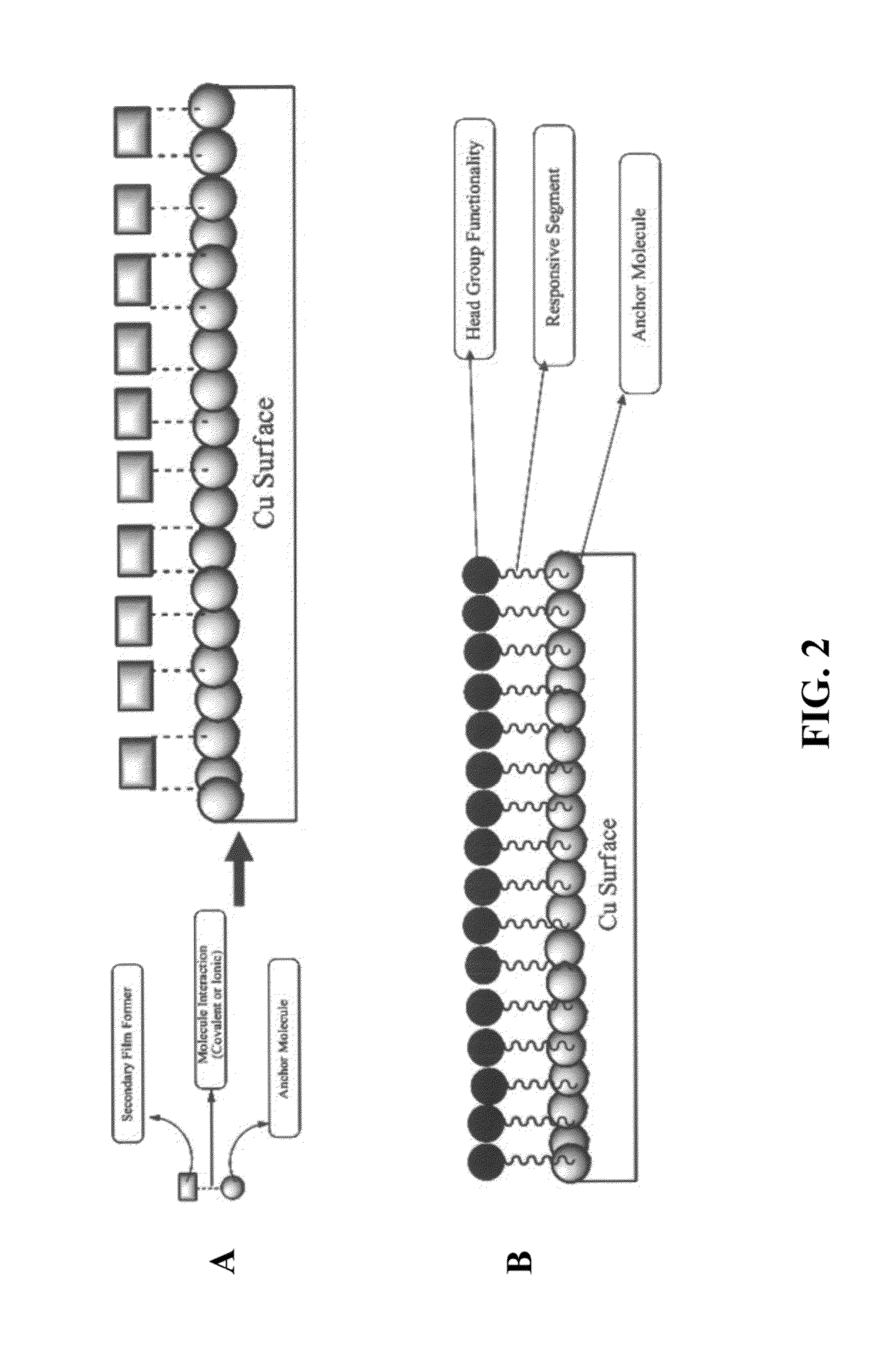Metal-passivating CMP compositions and methods
a technology of metal-passivating and compositions, applied in the field of polishing compositions and methods, can solve the problems of dishing-erosion, defectivity, and surface topography problems of common commercial copper cmp slurries, and the balance between chemical reactivity and mechanical abrasive properties of cmp slurry can be complicated, and the compositions often do not have good corrosion control after polishing
- Summary
- Abstract
- Description
- Claims
- Application Information
AI Technical Summary
Benefits of technology
Problems solved by technology
Method used
Image
Examples
example 1
Evaluation of CMP Compositions Comprising Salicylhydroxamic Acid (SHA) and a Metal-Chelating Agent
[0046]CMP compositions having a pH in the range of about 5 to 7, containing about 50 to about 500 ppm of salicylhydroxamic acid (SHA; a primary film-forming metal-complexing agent), about 1 percent by weight iminodiacetic acid (IDA; an auxiliary metal-chelating agent), and about 0.1 to about 1 percent by weight colloidal silica (mean particle size of about 80 nm), were utilized to polish 4-inch diameter copper blanket wafers in the presence of about 0.8% by weight hydrogen peroxide. The amounts of SHA, abrasive, and pH of each composition is provided in Table 1. The wafers were polished on a Logitech Model H CDP polisher (Logitech Ltd., Glasgow, UK) under the following operating conditions: a D100 polishing pad, platen speed of about 85 revolutions-per-minute (rpm), carrier speed of about 93 rpm, down force of either 1 pound-per-square inch (psi) or 3 psi, and a slurry flow rate of 120 ...
example 2
Evaluation of CMP Compositions Comprising N-Lauroyl Sarcosine (NLS) and Iminodiacetic Acid (IDA)
[0050]CMP compositions were utilized to polish 4-inch diameter copper blanket wafers. The compositions included about 0.1 percent by weight of colloidal silica abrasive (mean particle size of about 80 nm), about 100 ppm or 1000 ppm of N-lauroyl sarcosine (NLS), in combination with about 1 percent by weight of IDA. The wafers were polished on a Logitech Model II CDP polisher (Logitech Ltd., Glasgow, UK) in the presence of about 0.8 percent by weight hydrogen peroxide at a pH of about 7, under the following operating conditions: a D100 polishing pad, platen speed of about 85 rpm, carrier speed of about 93 rpm, down force of about 1 or about 3 psi, and a slurry flow rate of 120 mL / min. The SER for each composition was also determined.
[0051]The composition containing about 100 ppm of the NLS exhibited a static etch rate (SER) for copper of about 34 Å / min, while the composition containing abou...
example 3
Effect of Down Force on Removal Rate
[0052]A composition (Ex. 3A) comprising about 0.5% by weight of the colloidal silica, about 1% by weight glycine, and about 250 ppm (0.025%) SHA in water at pH 6 was utilized to polish 4-inch diameter copper blanket wafers on a Logitech polisher in the presence of about 0.8% by weight hydrogen peroxide under the following conditions: a D100 polishing pad, platen speed of about 85 rpm, carrier speed of about 93 rpm, down force of about 0 or about 3 psi, and a slurry flow rate of 120 mL / min. For comparison, wafers were also polished utilizing a model CMP slurry (Ex. 3B) comprising about 0.5% by weight of the colloidal silica, and about 1% by weight glycine, in water at pH 6 in the presence of about 0.8% by weight hydrogen peroxide under the same polishing conditions. A plot of Cu Removal Rate versus down force for each composition is provided in FIG. 3 As is readily apparent in FIG. 3 the composition of the present invention (Ex. 3A) provided a surp...
PUM
| Property | Measurement | Unit |
|---|---|---|
| mean particle size | aaaaa | aaaaa |
| mean particle size | aaaaa | aaaaa |
| pH | aaaaa | aaaaa |
Abstract
Description
Claims
Application Information
 Login to View More
Login to View More - R&D
- Intellectual Property
- Life Sciences
- Materials
- Tech Scout
- Unparalleled Data Quality
- Higher Quality Content
- 60% Fewer Hallucinations
Browse by: Latest US Patents, China's latest patents, Technical Efficacy Thesaurus, Application Domain, Technology Topic, Popular Technical Reports.
© 2025 PatSnap. All rights reserved.Legal|Privacy policy|Modern Slavery Act Transparency Statement|Sitemap|About US| Contact US: help@patsnap.com



